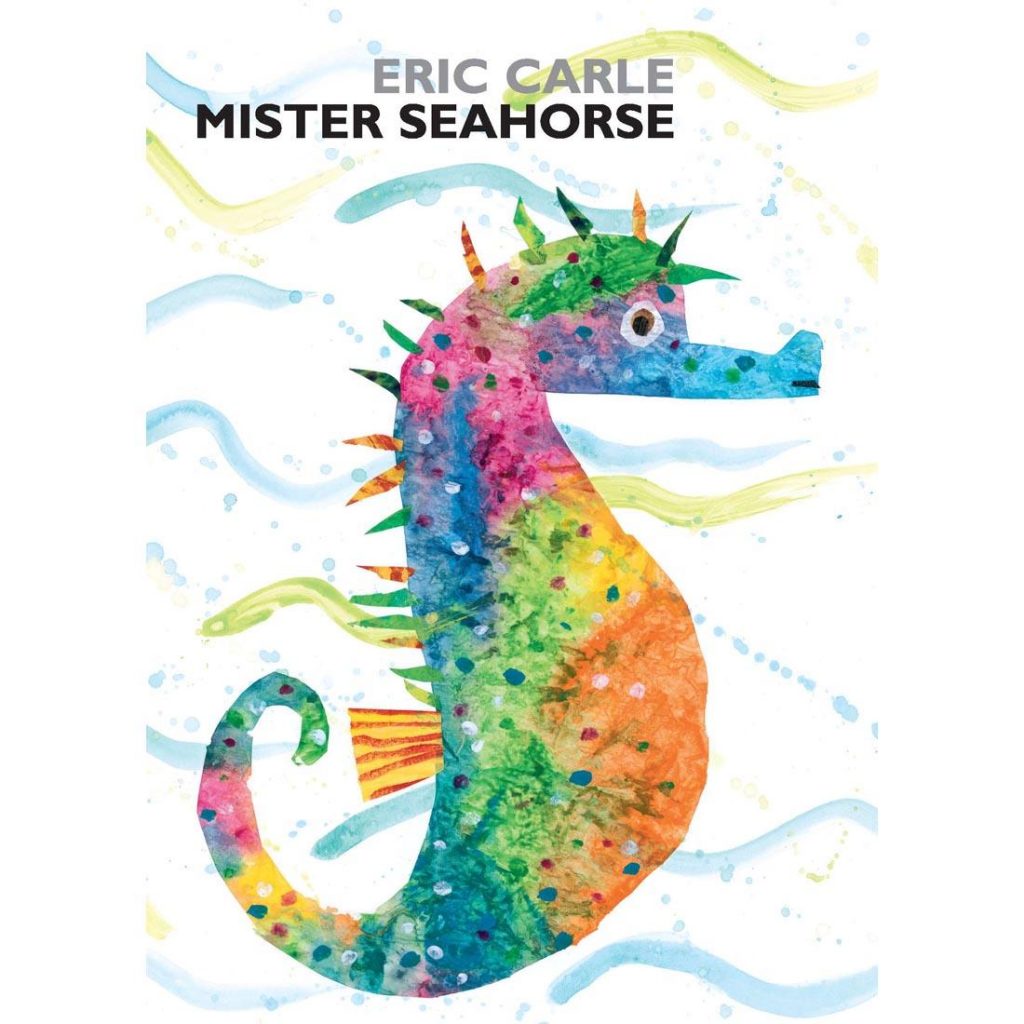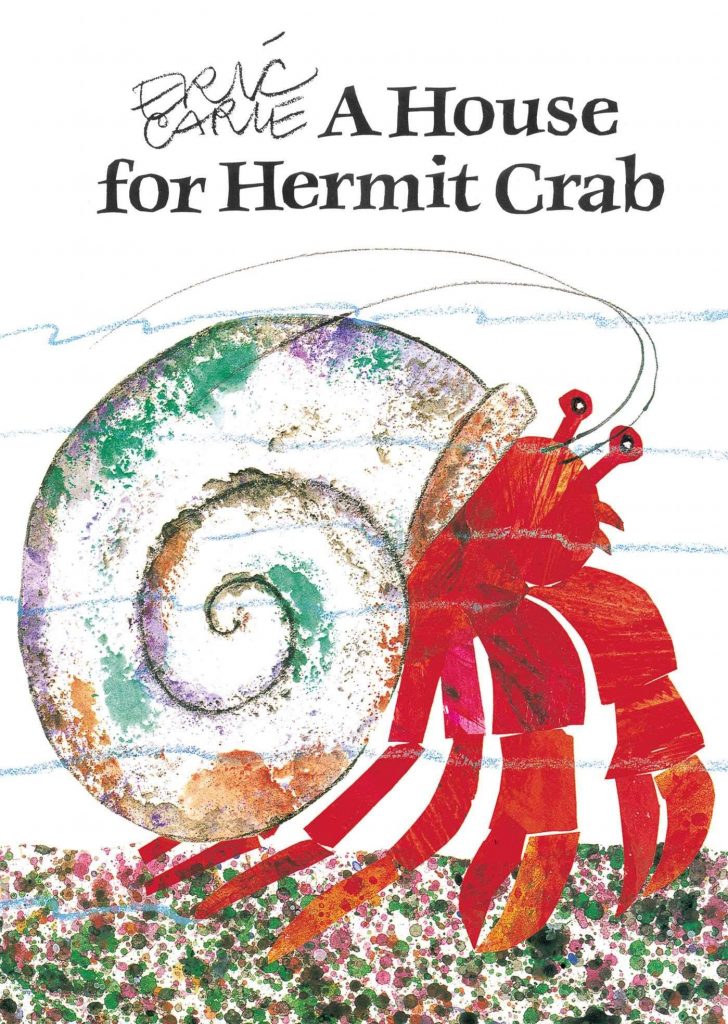
Review by Leah Harrigan
There’s certainly something special about the works of Eric Carle (1929-2021), the American author and illustrator who left a legacy of more than 70 children’s books celebrated worldwide. The self-described “picture writer”, Carle gifted us his bright, iconic tissue-paper illustrations that have adorned bookshelves since the 1960s. If you’ve read the The Very Hungry Caterpillar, you’ve been acquainted with Eric Carle.
Among common themes of friendship, transition, and curiosity in his books for young children, Carle draws connections between readers and characters to teach about the natural world. This idea of biocentric anthropomorphizing – fostering care and connection for nature by bringing nonhuman animal stories to life – runs through his books about hungry caterpillars, mixed-up chameleons, and grouchy ladybugs.
In Carle’s words, “I believe that children are naturally creative and eager to learn. I want to show them that learning is really both fascinating and fun.”
While we can find countless instances of biocentric anthropomorphizing among Carle’s engaging characters, some of the best examples emerge in two classics about ocean life.
Mister Seahorse
How many books do you know illustrate fathers caring for their babies? Mister Seahorse teaches that in most fish families, newly-laid eggs are left on their own. However, there are exceptions like the male seahorse, stickleback, tilapia, and others that care for eggs after they are laid.
In the book, Mrs. Seahorse asks for help while she wiggles about and lays her eggs on the pouch of Mr. Seahorse’s belly. She asks him to take good care of the eggs, and he promises to do so. He drifts through the sea carrying the eggs and meets other underwater fathers caring for their babies. Among his neighbors, Mr. Seahorse finds Mr. Stickleback taking care of his eggs with a nest he built for them.
“Keep up the good work,” says Mr. Seahorse and swims on his way.
As he drifts by Mr. Tilapia and bids hello, Mr. Tilapia can’t answer because his mouth is full of eggs. Mr. Seahorse wishes him to take good care until they hatch. He drifts by Mr. Kurtus who is taking care of eggs stuck on his head, and Mr. Pipe with eggs along his belly.
“You should feel proud of yourself,” says Mr. Seahorse and swims on his way.
When the time comes for the babies to be born, Mr. Seahorse twists and wiggles and the babies tumble from his pouch. As one baby tries to swim back, Mr. Seahorse says “I do love you, but now you are ready to be on your own.”
This colorful and surprising tale weaves care and empathy throughout the journey of Mr. Seahorse as he gently floats through the sea with his eggs on his belly. As readers learn of the actual ways fish babies are cared for, Mr. Seahorse’s goodwill towards his neighbors invites care and compassion for these quiet characters tending to their young.
A House for Hermit Crab
Another classic by Eric Carle, A House for Hermit Crab depicts one hermit crab’s journey along the ocean floor to find the perfect home. Once he steps out of his old, snug shell, Hermit Crab finds a bigger shell and wiggles right in. Since it’s much too plain, he seeks out sea creatures to adorn the shell with their color and beauty.
Hermit Crab first finds a willing sea anemone to live on his shell. He recruits handsome starfish, pretty coral, fierce sea urchins, and even tidy little snails to help clean the shell. He is grateful for their company and comes to love his new friends.
“They have been so good to me,” thought Hermit Crab. “They are like a family. How can I ever leave them?”

When Hermit Crab outgrows his adorned shell, readers learn of the treasures that can be found when he opens himself to a new and unknown opportunity. Once he wiggles out of the shell, the ocean floor looks wider than ever – but he isn’t afraid. He knows he’ll find friends willing to help him once more.
Beyond more obvious themes of collaboration and learning to appreciate change, this book illustrates the symbiotic relationship between Hermit Crab and his neighboring sea anemones, a relationship where both creatures benefit from living together. In this case, the anemone feeds from many different locations while the hermit crab moves around the reef, and in turn the hermit crab is camouflaged and protected from predators by the anemone’s stinging tentacles. Their union not only makes for a beautiful home, but also a sustaining partnership.
Both Mr. Seahorse and Hermit Crab, with their unique journeys and perspectives, mirror stories of the natural world that help readers understand the real narratives of nonhuman living organisms. Alongside learning these creatures’ lifecycles and behaviors – even in small ways – readers are encouraged to connect with the characters they come to know. Being invited into communities of fish families and sea creatures both teaches and brings them to life, creating a likeness to the ways in which human animals care for one another in their own communities above water.
These two books offer just a taste of the world of Eric Carle, a world where we can relate to the lives of nonhuman animals through engaging and accessible stories. Readers will undoubtedly find more biocentric anthropomorphizing in his other books, as he skillfully blends memorable characters with thoughtful lessons. Like Mr. Seahorse drifting gently through the water, there continually seems to be new (and surprising) ways to connect to the world around us.
Optional links to include:
Mister Seahorse (read aloud) https://www.youtube.com/watch?v=yoqxhIi4HbQ
A House for Hermit Crab (read aloud) https://www.youtube.com/watch?v=0UlGQUNLwAQ
The Official Eric Carle Website https://eric-carle.com/
List of Books by Eric Carle https://eric-carle.com/wp-content/uploads/2019/08/ecbiblio.pdf?

